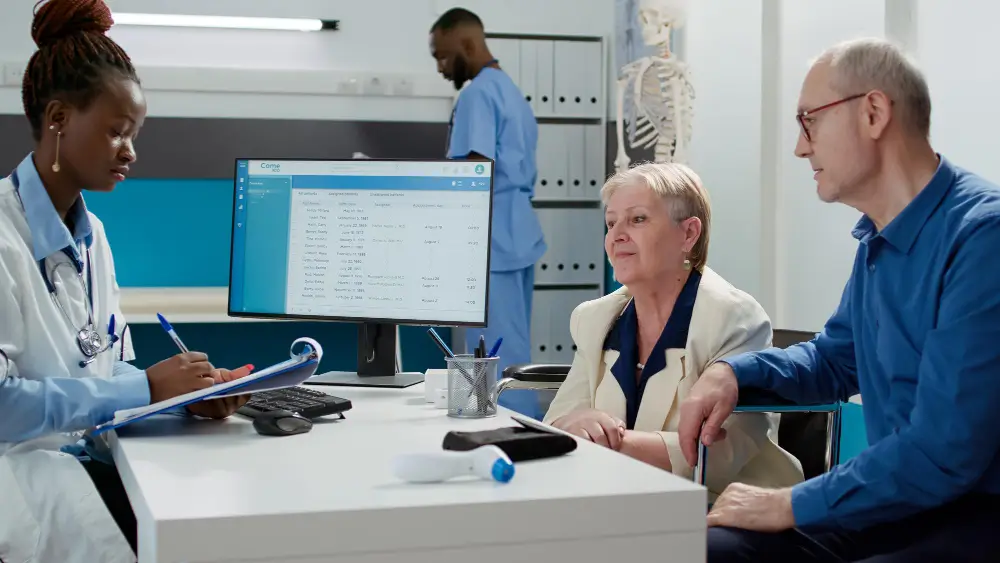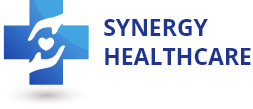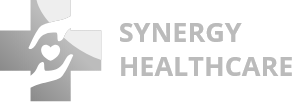Just like a podiatrist takes specialised knowledge and proper attention to codes, modifiers and changes of regulation to ensure smooth, and correct, treatment of their patients, podiatrist medical billing and coding is no different. Podiatrists practices can increase revenue, cut high denial rates and enhance claims accuracy by working together with an experienced podiatry medical billing company like Synergy HCLS. Understanding the complexities of podiatrist billing and adhering to best practices will help the healthcare providers to focus on patient care rather than administrative work.
A quality podiatrist medical billing company significantly aids a practice’s profitability. This will also enable faster reimbursements and reduce administrative burden overall.
Benefits of Technology in Modern Medical Billing

The introduction of technology in medical billing has, without a doubt improved the entire process of billing making it more seamless, quicker and reliable.
1. Enhanced Accuracy: One of the most notable advantages of contemporary medical billing technology is greater accuracy in billing. In older systems, manual entry led to human error, which translated to claims getting rejected, delayed payments, and, in a nutshell, more effort to rectify issues. By using automation to ensure codes are applied correctly and that all required information is included, modern medical billing systems reduce the chance of errors considerably. In addition, advanced coding software also gives alerts when a code is wrong or missing, which corrects the codes before it becomes a problem.
2. Enhanced Efficacy and Rapid Processing: Automation accelerate billing cycle from first patient interaction to the last payment. Smart technologies that automatically handle claims processing, trace overdue bills, and also communicate with insurance providers are incorporated in modern medical billing services powered by AI. These solutions help reduce the time-taking manual tasks and give the employees the freedom to work on more complex aspects of the billing process. Quicker billing cycles lead to quicker reimbursements for healthcare providers.
3. Cost Savings: Technology helps reduce administrative costs in medical billing significantly since it reduces the need for a large billing workforce and minimizes labour-intensive repetitive processes associated with errors and rework. These practices automate processes like payment follow-up, the status of your patient, and the claims submission to save time and money in human labor. Greater accuracy also reduces the cost of resubmissions, because there are fewer denied or rejected claims.
4. Improved Regulatory Compliance: The healthcare industry is highly regulated, and there are constant updates on the various laws and billing codes. These modifications may be challenging to adhere to manually, yet medical billing solutions of today have real-time updates for coding systems like ICD-10 and CPT codes. These updates ensure that the professionals follow minimum requirement rules and practices so that no fine or legal issues arise.
5. Data Analytics & Insights: Medical billing technology enables providers to track and analyze large volumes of data throughout the billing cycle. Through data analytics, practices can learn about trends they can see what services are most often being reimbursed, average payment times, and what parts of the billing process require a little more focus. This data enables practices to take appropriate decisions, maximize revenue cycle management and forecast cash flow.
Challenges in Modern Medical Billing
Though technology transformed the landscape of medical billing today, it comes with disadvantages. These challenges can be navigated by health care providers to maximize the benefits of the technology used in present medial billing.
1. High Setup Cost at Initial Stage: Implementing the medical billing technology, comes with the high-upfront costs. Providers have to pay to install software, get training, and integrate it into existing systems. For smaller practices, these costs can be unaffordable, stifling or delaying the implementation of advanced billing technology.
2. Complexity of Integration: Healthcare organizations are often dependent on disparate systems including those for electronic health records (EHR), patient scheduling, and billing. Integrating these systems with medical billing and other technology platforms can prove complex and time consuming. It is important that all the systems communicate seamlessly and efficiently, failure to do so would lead to data silos and inefficiencies.
3. Data Security and Privacy Concerns: As more and more sensitive patient data is being processed digitally, healthcare providers need to be aware and vigilant about data security and privacy. This is due to the stringent regulations like HIPAA in the US regulating the handling of personal health information (PHI). As practices implement more sophisticated billing technology, they also need to invest in strong cybersecurity measures to keep patient data from being compromised or falling into the wrong hands.
4. Tech-Driven Medical Billing Transition must Adjust Staff: Training is essential for a shift to technology-driven medical billing. It also means that employees need to be trained on the software tools, and how to best deliver and interpret the data they’re creating. Additionally, there may be some resistance to change in the field of billing, as with any workforce, some workers may fear that automation will take over their jobs. Part of most successful implementations is making sure staff feel comfortable using new technologies.
5. Staying Up to Date with Technological Evolution: Modern medical billing technology is changing quickly, and practices need to constantly update their systems to remain modern. Keeping up with the latest tools and procedures can be burden some for billing departments due to regular software updates, new features, and changing healthcare regulations. Providers also need to make sure they are operating with the latest technology and adjusting accordingly.
Summing up
Technological advancements in the field of medical billing have revolutionized the manner in which healthcare providers manage their revenue cycle. Medical billing technology has helped providers grow their bottom lines and make processes more efficient by improving accuracy, speed, compliance, and cost efficiency. But, as with any major technology advancement, hurdles remain to be addressed — large initial investments; complex integration; and the need for a robust data security environment.
As medical billing services continue to evolve, providers face a balancing act in weighing the benefits against the barriers to deploying the optimal technology according to their needs. However, technology will always play an integral role when it comes to developing the best healthcare billing practices and ensuring the financial health of health systems provided the right tools and systems are implemented.
This thought piece highlights how technology has transformed the medical billing industry and with that, vast benefits and challenges have come along the way. The use of technology in medical billing and coding helps a healthcare provider create an efficient, cost-effective and compliant billing process.

